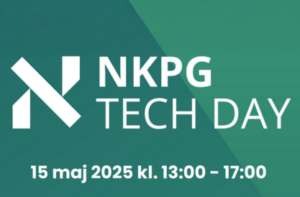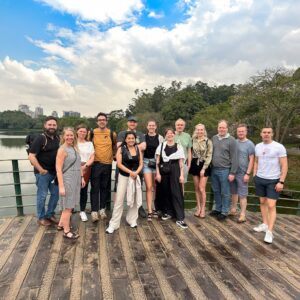In the forest industry, there’s a need for support in making site-specific management decisions, improving wood quality, environmental protection, and increasing profits. In a project by Arboair, AI Sweden and Holmen, an AI platform for forest analysis using synthetic training data is developed to help modernize the Swedish forest industry and respond to those needs.
The project aims to break completely new ground by investigating how synthetic image data can be used to support AI applications in the modern forest industry, contributing to previously missing knowledge and creating better training data as a result.
By addressing current challenges such as bark beetle infestation, protecting deciduous forests and species, avoiding time-consuming manual forest inventory, and keeping forest data updated over time, the project is set to make it possible for forest owners to learn about the forest condition and make decisions easier.
The answer is synthetic data
The aim is to develop a pipeline for synthetic image data generation to be used in an end-to-end AI for forest analysis. Synthetic data is data that is created from scratch in contrast to real data that is collected from the real world.
Arboair uses synthetic image data as a complement to original data – drone images over forests – which makes it possible for the AI model to train on synthetic data and learn to identify rare tree species or sick trees. One of the benefits of using this method is the small amount of real data that is needed, saving both time and money.
“This means that we can train the AI model to identify diseases or rare species on a minimal amount of data and work proactively to find it. Otherwise, we would need to wait for the outbreak to happen, and then train the AI to identify the disease or species for future scenarios. With this method we are one step ahead,” Erik Roos, 3D artist at Arboair explains.
Annotation – a thing of the past
Human data annotation is the process of tagging or labeling data in a systematic way for the AI model to practice. This isn’t only a heavily time-consuming and slow way to gather data, it’s also a higher risk of inheriting biases and inaccuracies. For example, the model could start identifying spruces as oaks due to human error. Using synthetic data instead reduces the time and costs, and biases and incorrectness could be reduced by controlling the data that the model is practicing on.
The method is a faster way to analyze forests and make decisions. It’s also beneficial to use when it comes to integrity questions because of certain limitations of flying drones over specific areas.
Tests in Data Factory
At the moment, the platform is tested in AI Sweden’s Data Factory in Gothenburg to make the model as robust as possible, with a continuous dialogue with Holmen.
Facts
Funding: Vinnova, Arboair, Holmen, AI Sweden
Total project budget: ~ 6.9 MSEK
Participants: Arboair, Holmen, AI Sweden
+ Reference group: East Sweden Game, Skogstekniska klustret, Spillkråkan kvinnliga skogsnätverk
The article is orginally from Linköping Science Park
Picture: Arboair















